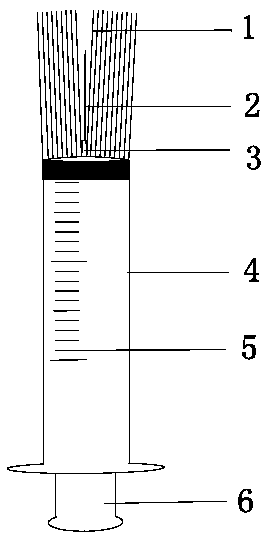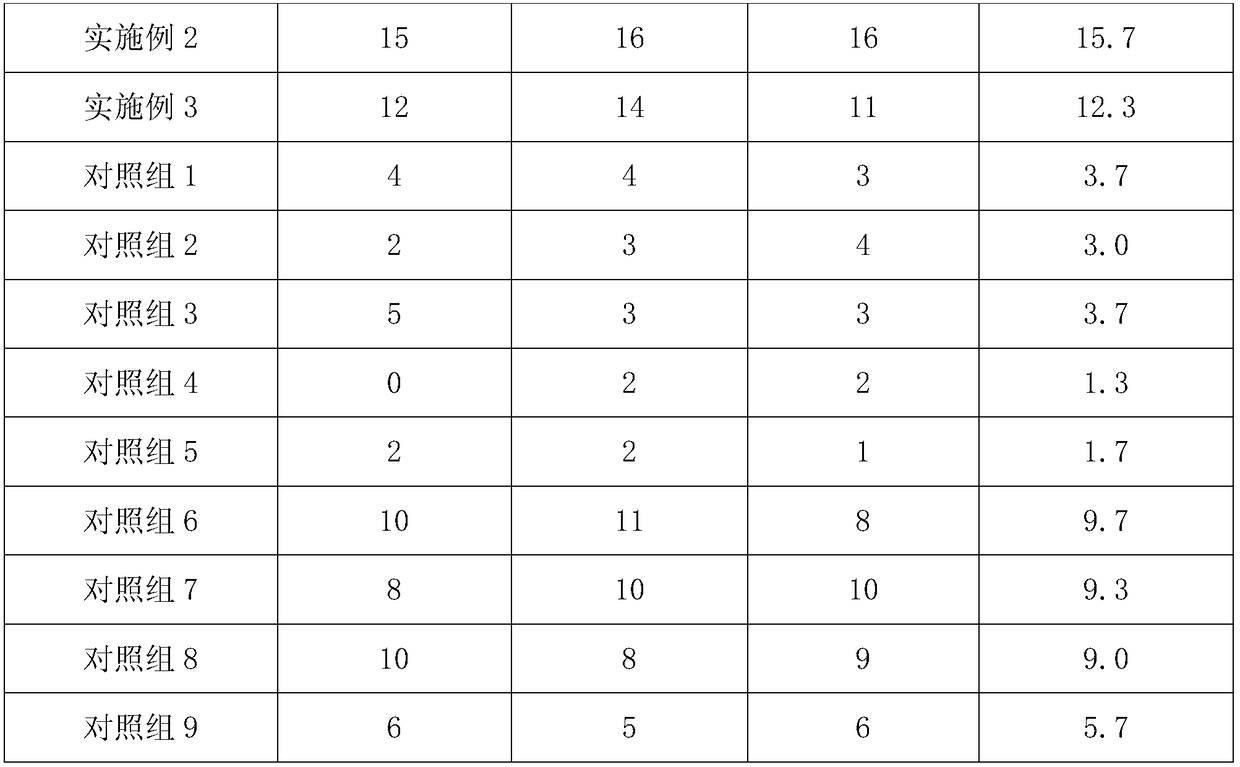Method for breeding double haploid of corn*rice distant hybridization
A technology of distant hybridization and double haploid, which is applied in the direction of botanical equipment and methods, application, plant gene improvement, etc., can solve problems such as low efficiency, dyeing variation, and large plant toxicity, and achieve simplified procedures, low cost, The effect of low component concentrations
- Summary
- Abstract
- Description
- Claims
- Application Information
AI Technical Summary
Problems solved by technology
Method used
Image
Examples
Embodiment 1
[0029] A method for breeding double haploids by distant hybridization of corn×rice, said method comprising the following steps:
[0030] (1) corn ears bagging: choose healthy and disease-free corn plants, put sheepskin bags on the ears before the filaments are drawn out, and wait for the filaments to be drawn out;
[0031] (2) Collecting pollen from rice spikes: after rice heading and before flowering, cut off the young and tender spikelets at the base of each spike, keep the middle and upper spikelets, cover the spikelets with a cowhide bag, and tie the bag tightly. Gently bend the ears of rice, tap the paper bag to make the pollen fall into the bag, tap the paper bag again to make the pollen in the bag concentrate in the middle of the bag, remove the kraft bag, and get the rice pollen for later use;
[0032] (3) Hybridization of corn and rice: step (1) pollination begins on the second day after the filaments are pulled out. The specific pollination method is: first remove th...
Embodiment 2
[0038] A method for breeding double haploids by distant hybridization of corn×rice, said method comprising the following steps:
[0039] (1) corn ears bagging: choose healthy and disease-free corn plants, put sheepskin bags on the ears before the filaments are drawn out, and wait for the filaments to be drawn out;
[0040] (2) Collecting pollen from rice spikes: after rice heading and before flowering, cut off the young and tender spikelets at the base of each spike, keep the middle and upper spikelets, cover the spikelets with a cowhide bag, and tie the bag tightly. After 1.25 hours, put the bagged Gently bend the ears of rice, tap the paper bag to make the pollen fall into the bag, tap the paper bag again to make the pollen in the bag concentrate in the middle of the bag, remove the kraft bag, and get the rice pollen for later use;
[0041] (3) Hybridization of corn and rice: step (1) pollination begins on the 3rd day after the filaments are pulled out. The specific pollinat...
Embodiment 3
[0047] A method for breeding double haploids by distant hybridization of corn×rice, said method comprising the following steps:
[0048] (1) corn ears bagging: choose healthy and disease-free corn plants, put sheepskin bags on the ears before the filaments are drawn out, and wait for the filaments to be drawn out;
[0049] (2) Rice ear pollen collection: after rice earing and before flowering, cut off the young and tender spikelets at the base of each ear, keep the middle and upper spikelets, cover the spikelets with a cowhide bag, and tie the mouth of the bag tightly. After 2 hours, put the bagged Gently bend the ears of rice, tap the paper bag to make the pollen fall into the bag, tap the paper bag again to make the pollen in the bag concentrate in the middle of the bag, remove the kraft bag, and get the rice pollen for later use;
[0050] (3) Hybridization of corn and rice: Step (1) pollination begins on the 4th day when the filaments are pulled out. The specific pollinatio...
PUM
 Login to View More
Login to View More Abstract
Description
Claims
Application Information
 Login to View More
Login to View More - R&D
- Intellectual Property
- Life Sciences
- Materials
- Tech Scout
- Unparalleled Data Quality
- Higher Quality Content
- 60% Fewer Hallucinations
Browse by: Latest US Patents, China's latest patents, Technical Efficacy Thesaurus, Application Domain, Technology Topic, Popular Technical Reports.
© 2025 PatSnap. All rights reserved.Legal|Privacy policy|Modern Slavery Act Transparency Statement|Sitemap|About US| Contact US: help@patsnap.com



